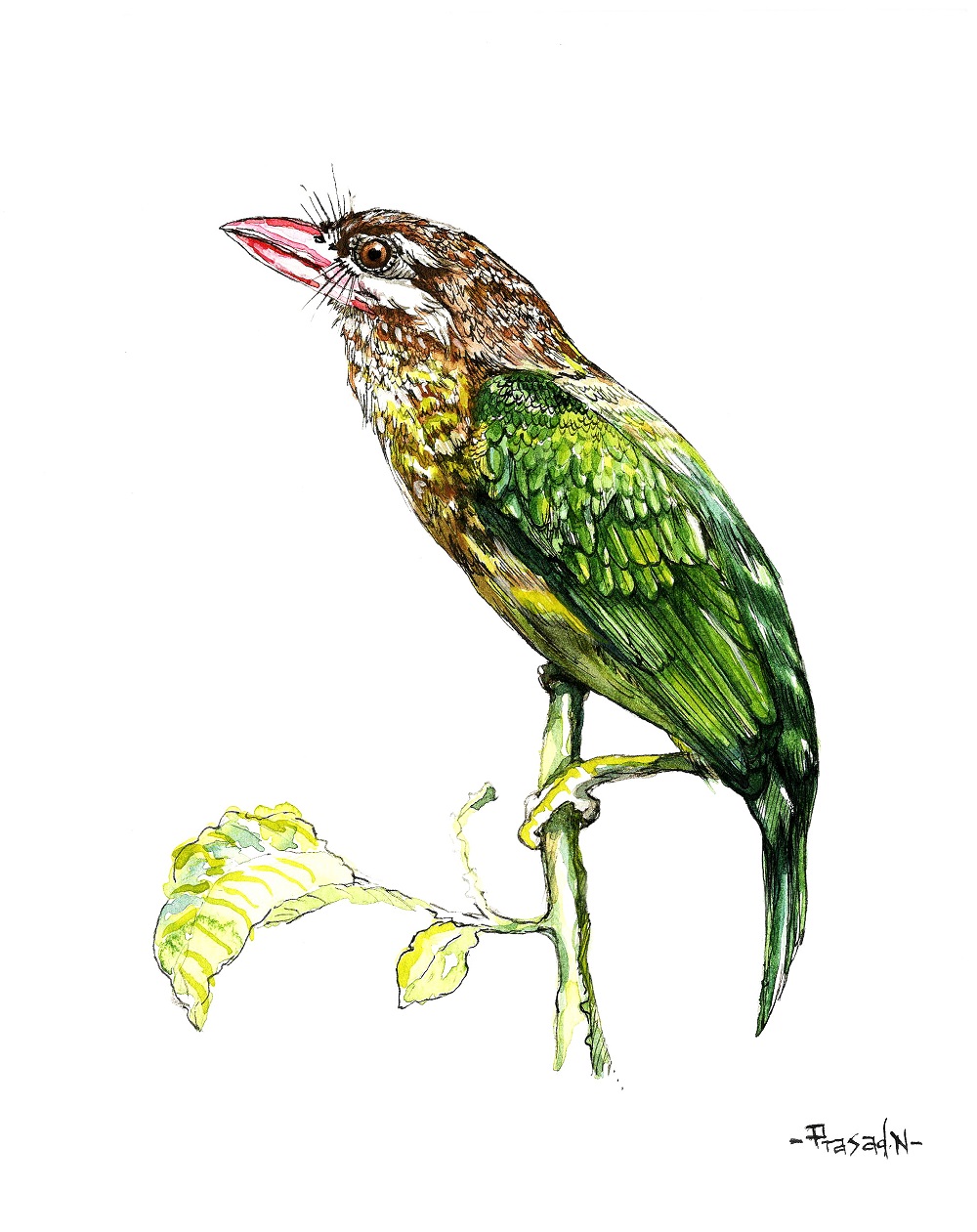

- Title: Whiskered Queen!
- Medium: Ink and water color on paper
- Duration: 10 hours
- October-30th-2015
Hearty welcome to yet another edition of Birds of Bangalore, we are moving smoothly towards thirteenth week and it was both feeling of pleasure and wretched to watch the bird of this week at Rampura Lake.
With mixed feelings I am writing this article, lonely misty long walk towards this lake early morning saw many gigantic trucks dumping huge loads of debris from construction sites. This was about 5:30 AM in the morning, it was supervised by one of the rich landlords of this area, I didn’t take out my camera. Just pretended to be on a walk and carried on towards the lake. On the banks of this lake we have many farmers growing various vegetables and a small gauva plantation, that’s where I sat for the remaining three hours and watched our bird of this week.
This lake was once part of the bird survey; it had sandpipers, plovers, swamphens and today it just turning into one of the many victims of human greed. However our bird of this week was happy with the plantation and vegetable farms coming up on the banks of this lake. They have a distinctive call Kot-roo Kotroo; their head is colored light brown with streaks of off-white, eyes is dark brown with black iris, there is a prominent white supercilium and broad stripe below their eye which also gives them their name. Their throat is also light brown with streaks of off-white, beak is light pink and majority of their body is colored green.
Any guesses? Yes, they are frugivorous meaning they mainly fed on fruits. Well, White cheeked barbet (Megalaima viridis) is our bird of this week. They occasionally feed on the insects from the vegetable farms as well. There are couple of big Gulmohur trees close to this plantation where they have dug-up their nests. Farmers at this guava plantation let these barbets feed on the ripe fruits, since they don’t sell the ripe ones and off-course these barbets also feed on the insects at the neighboring farm. It’s a great way to co-exist, isn’t it? These birds also act as great seed dispersers for the farmers.
They breed in summers, male digs out the soft wood from trees to make the nests, both male and female take part in incubating the eggs and also both take part in taking care of the young ones, squirrels are main threat to these barbets. These barbets are also found in plenty in Cubbon park, Lalbagh and other parks which have numerous gulmohur trees. It’s great to see these birds thriving in urban spaces however for how long we are not sure, right now we do have their favorite nesting trees and fruit bearing trees in our parks.
Many such trees are been cut down for fancy looking walkway inside our parks, which I feel is utter un-necessary activity. Even at the place where I live, we had about three hundred mango trees cut down for road widening. Understand that progress is necessary evil however we could plant the same number of trees along the roadside? Can’t we?
In the beginning of this article I did mention about mixed feelings, one way it’s great to know about the frugivorous birds are benefiting from encroached lake area however at the same time we have many other birds who are losing out, can we have a perfect world for once? With this question, I leave you pondering for the rest of the week.
Until next time, keep watching!